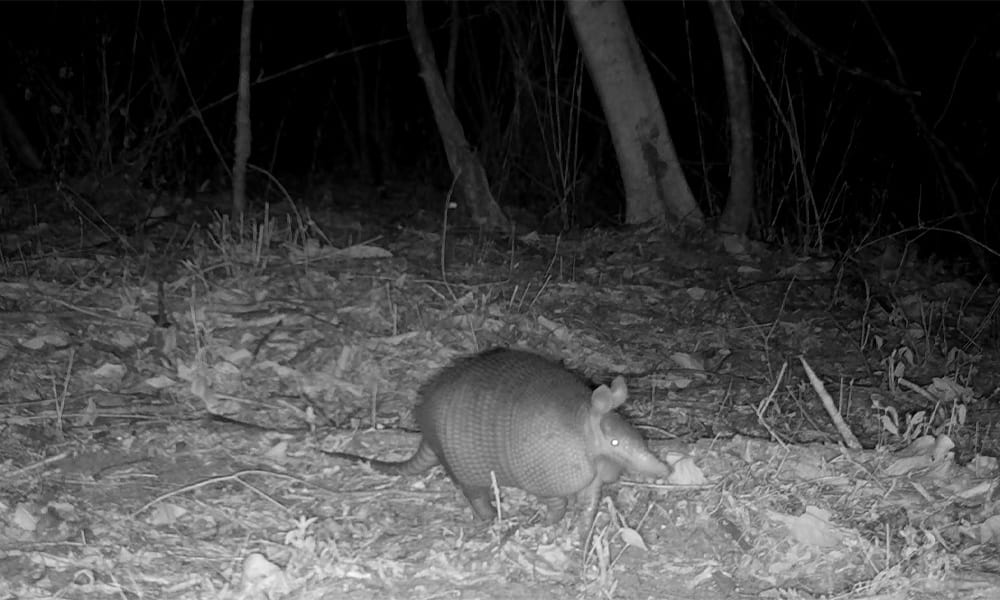They’re covered in armor. They can’t see much but their sense of smell is on point. They can be startled into backflips. They might be delicious, but they also might give you leprosy. They are nine-banded armadillos.
The nine-banded armadillo (Dasypus novemcinctus) is also known as the nine-banded long-nosed armadillo if you prefer names with more adjectives. In Spanish, it’s the armadillo de nueve bandas, but I’ve heard it called a cuzuco much more frequently.
You’re not going to confuse the nine-banded armadillo with too many other animals in Costa Rica. It has hair and produces milk, so it is a mammal, but nearly its entire body is covered with a leathery type of armor. Technically, there’s another armadillo in Costa Rica, the naked-tailed armadillo, but you’ve probably never heard of that, and you’ve almost definitely never seen one. So if you see a creature that resembles an opossum wearing a suit of armor, you’re looking at a nine-banded armadillo.
The nine-banded armadillo’s diet consists mostly of creatures that hide in leaflitter or under the soil. They eat a lot of beetles, ants, termites, earthworms, millipedes, and larvae. They have a terrific sense of smell that they use to locate their prey. To find food, they push their little tank bodies into the leaves and soil using their noses and powerful foreclaws. They can hold their breath for up to six minutes, which comes in handy when your nose and mouth are a few inches under the soil eating little creatures.
Their eyesight isn’t great. Sometimes while walking in the forest, I’ll happen upon a nine-banded armadillo that’s out foraging during the day (usually they’re nocturnal). Their terrible vision plus the fact that they’re so engrossed in searching for food underground will sometimes allow me to walk right up to them. When they finally do notice my presence, they frequently do a combination jump in the air/backflip and dart off into the safety of the underbrush. I’ve recorded similar acrobatics on my camera traps as well.
If you talk to enough Ticos del campo (Costa Ricans who live in the countryside), you’re bound to learn that nine-banded armadillos are, or these days more likely were, frequently on the menu. The meat is supposedly good-tasting and pork-like. I’ve heard tacos are the preferred preparation. But I’ve also learned that nine-banded armadillos are the only other animal, besides humans, that can get leprosy. So, if I were you, I’d stay away from armadillo meat. Nobody wants ‘leprosy tacos’ as a cause of death.
Though they are definitely more active at night, I have startled a few into a backflip during my travels in the forest. They are also a frequent star of my camera trap videos in locations across the country.
Some of my favorite nine-banded armadillo videos are of them bathing in a small puddle. They bathe with gusto, flipping their little bodies all over the place. I’ll include a clip of one splashing around in the video below.
About the Author
Vincent Losasso, founder of Guanacaste Wildlife Monitoring, is a biologist who works with camera traps throughout Costa Rica. Learn more about his projects on facebook or instagram. You can also email him at: vincent@guanacastewildlifemonitoring.com

